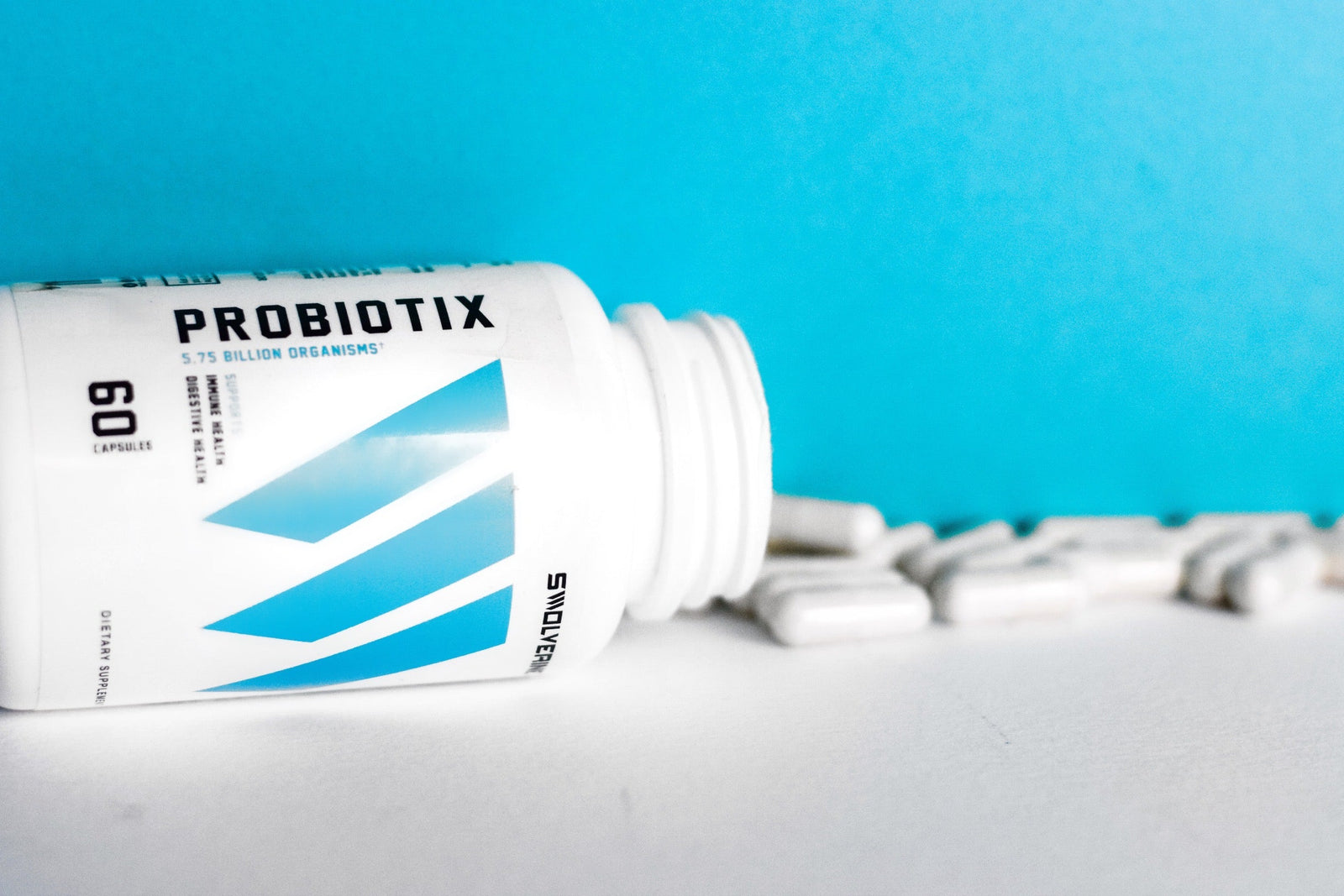In the quest for optimal gut health, two terms often lead the conversation: probiotics and prebiotics. But what is the difference, and how can they work together to enhance your well-being? Probiotics, the friendly bacteria that boost your gut flora, and prebiotics, the fibers that nourish them, are both essential players in this symbiotic relationship. As evidence mounts on the importance of gut health to our overall vitality, understanding how to harness the benefits of these microbial allies can be the key to unlocking a healthier you.
Join us as we delve into the fascinating world of probiotics and prebiotics, exploring their unique roles, benefits, and how you can easily incorporate them into your daily routine for holistic wellness.
Discover how these powerful elements can transform your digestive health and elevate your overall well-being, making every meal a step towards a happier, healthier life.
Understanding Gut Health: The Foundation of Your Wellness
Gut health refers to the optimal functioning and balance of microorganisms that live within your digestive tract, often called the gut microbiome. This internal ecosystem is composed of trillions of bacteria, fungi, viruses, and other microbes that play an essential role in:
-
Breaking down food
-
Absorbing nutrients
-
Supporting immune defense
-
Producing essential compounds like vitamins and neurotransmitters
An imbalanced gut, known as dysbiosis, can trigger a cascade of health issues—from bloating and brain fog to autoimmune conditions, weight gain, and even mood disorders. Researchers are now referring to the gut as the "second brain" due to the gut-brain axis—a bidirectional communication system between your gastrointestinal tract and central nervous system (Carabotti et al., 2015, Annals of Gastroenterology).
Furthermore, over 70% of the immune system resides in the gut, meaning your body’s first line of defense begins in the microbiome (Belkaid & Hand, 2014, Science). This is why improving gut health can enhance not only digestion but energy levels, mood stability, skin health, and hormonal balance.
What Are Probiotics?
Probiotics are live microorganisms that, when consumed in sufficient quantities, confer health benefits to the host. Think of them as reinforcements for your gut army—they help maintain microbial balance and strengthen the gut lining.
Common Strains & Their Benefits:
-
Lactobacillus acidophilus – Helps break down lactose and promotes vaginal health
-
Bifidobacterium longum – Supports immune modulation and digestion of fiber
-
Saccharomyces boulardii – A beneficial yeast that helps manage diarrhea and antibiotic recovery
These strains are found in fermented foods like:
-
Yogurt and kefir
-
Sauerkraut and kimchi
-
Miso and tempeh
-
Kombucha
Probiotic supplements are available, but strain diversity, dosage, and delivery method matter. Look for formulas with at least 1 billion CFU and strains backed by clinical trials (Hill et al., 2014, Nature Reviews Gastroenterology & Hepatology).
What Are Prebiotics?
Prebiotics are non-digestible fibers and compounds that serve as fuel for the probiotics already living in your gut. While probiotics are the workers, prebiotics are the food source that helps them thrive.
Prebiotic-Rich Foods:
-
Garlic, onions, and leeks (rich in inulin and fructooligosaccharides)
-
Bananas (especially slightly green ones)
-
Chicory root
-
Asparagus and Jerusalem artichokes
-
Whole grains like oats and barley
These fibers are fermented by your gut bacteria to produce short-chain fatty acids (SCFAs) like butyrate, acetate, and propionate. These compounds:
-
Fuel the colon cells
-
Lower inflammation
-
Improve gut barrier function
-
Aid in fat metabolism and glucose regulation (Koh et al., 2016, Cell)
When paired with probiotics, prebiotics enhance their survival and colonization—a combination known as synbiotics.
The Role of Probiotics in Digestive Health
Probiotics play a critical role in both preventing and treating gastrointestinal disorders by:
-
Restoring microbial balance after antibiotic use or illness
-
Reducing inflammation associated with conditions like IBS and IBD
-
Inhibiting pathogenic bacteria like Clostridium difficile and E. coli
-
Supporting the gut lining by increasing mucin production and tight junction proteins
They also enhance nutrient bioavailability—helping your body extract more vitamins, minerals, and amino acids from the foods you eat. Certain strains can even synthesize B vitamins and improve lactose digestion (Sanders et al., 2019, Frontiers in Microbiology).
Emerging research suggests probiotics may also play a role in:
-
Reducing anxiety and depression symptoms (via the gut-brain axis)
-
Improving skin conditions like acne, eczema, and rosacea
-
Enhancing immune responses to vaccines and infections
The Role of Prebiotics in Digestive Health
Prebiotics are equally important, especially in the long-term maintenance of microbial diversity and intestinal health.
Key benefits include:
-
Boosting production of SCFAs (especially butyrate), which:
-
Nourish colonocytes (gut lining cells)
-
Tighten the intestinal wall
-
Reduce systemic inflammation
-
-
Regulating immune activity, lowering risk for allergies and autoimmune diseases
-
Improving regularity and stool quality by bulking and softening waste
-
Lowering pH in the colon, which makes it harder for pathogens to survive
Additionally, prebiotics enhance calcium and magnesium absorption, helping support bone health and neuromuscular function. For individuals with metabolic syndrome or insulin resistance, prebiotics can improve glycemic control and lipid profiles (Slavin, 2013, JAND).
Probiotics vs. Prebiotics: What’s the Difference?
Probiotics vs. Prebiotics: What’s the Difference and Why You Need Both
While both probiotics and prebiotics contribute to gut health, they do so in distinctly different ways.
-
Probiotics are live microorganisms—the beneficial bacteria you add to your gut through food or supplements. They help restore and maintain a healthy gut microbiome by competing with harmful bacteria, strengthening the gut barrier, and producing essential vitamins and enzymes. Fermented foods like yogurt, kefir, kimchi, and miso are common sources, along with probiotic supplements.
-
Prebiotics, on the other hand, are non-digestible fibers that serve as fuel for the good bacteria already living in your gut. These fibers stimulate the growth and activity of beneficial microbes and support the production of short-chain fatty acids (SCFAs) like butyrate, which have powerful anti-inflammatory effects (Koh et al., 2016).
The Benefits of Probiotics and Prebiotics
A healthy gut isn’t just about digestion—it’s about strengthening immunity, enhancing mood, and optimizing nutrient absorption. Probiotics and prebiotics work together to support these systems, but they each bring their own unique benefits to the table.
Benefits of Probiotics
Probiotics are live beneficial bacteria that help restore and maintain a healthy gut microbiome. When consumed regularly, they can offer a wide range of health benefits:
-
Restore Gut Balance After Antibiotics
Antibiotics can wipe out good and bad bacteria. Probiotics help recolonize beneficial strains to restore balance (McFarland, 2006). -
Boost Immune Function
Probiotics enhance immune responses by increasing production of secretory IgA and stimulating T-cell activity (Ouwehand et al., 2002). -
Improve Mental Health
Certain strains like Lactobacillus rhamnosus influence the gut-brain axis, potentially reducing anxiety, depression, and stress-related behaviors (Bravo et al., 2011). -
Support Digestive Health
Probiotics can help alleviate symptoms of IBS, bloating, gas, and diarrhea (Didari et al., 2015). -
Enhance Nutrient Synthesis & Absorption
Probiotics assist in the synthesis of B vitamins and vitamin K, and may improve the bioavailability of minerals like calcium and magnesium (LeBlanc et al., 2013).
Benefits of Prebiotics
Prebiotics are non-digestible fibers that feed your existing gut bacteria, allowing them to grow, multiply, and produce metabolites that benefit the host—namely, short-chain fatty acids (SCFAs) like butyrate.
-
Stimulate Growth of Beneficial Bacteria
Prebiotics selectively support strains like Bifidobacteria and Lactobacilli, improving microbial diversity and resilience (Gibson et al., 2004). -
Enhance Mineral Absorption
Prebiotics such as inulin improve calcium and magnesium absorption, supporting bone health and preventing osteoporosis (Scholz-Ahrens et al., 2007). -
Reduce Inflammation
SCFAs produced by prebiotic fermentation reduce inflammation by modulating immune responses and supporting gut barrier integrity (Koh et al., 2016). -
Support Metabolic Health & Weight Management
Prebiotics increase satiety hormones like GLP-1 and PYY, which can help regulate appetite and improve insulin sensitivity (Parnell & Reimer, 2009). -
Improve Bowel Regularity
Prebiotic fibers help bulk and soften stools, promoting regular bowel movements and alleviating constipation.
Together, probiotics and prebiotics create a powerful synergy that supports whole-body health—from digestion and immunity to mood and metabolism.
Probiotics vs. Prebiotics: Comparison Table
| Feature | Probiotics | Prebiotics |
|---|---|---|
| Definition | Live beneficial microorganisms added to the gut | Non-digestible fibers that nourish existing beneficial gut bacteria |
| Function | Restore microbial balance, crowd out harmful bacteria, support gut lining | Fuel good bacteria, increase microbial activity, and produce SCFAs |
| Sources | Fermented foods (yogurt, kefir, sauerkraut, kimchi, miso) and supplements | Fiber-rich foods (garlic, onions, leeks, asparagus, bananas, whole grains) |
| Mechanism of Action | Introduce live bacteria to the gut microbiome | Enhance the growth and effectiveness of existing bacteria |
| Immune System Benefits | Boosts immune response and modulates inflammation (Ouwehand et al., 2002) | SCFAs regulate immune activity and protect gut lining (Slavin, 2013) |
| Examples | Lactobacillus, Bifidobacterium, Saccharomyces boulardii | Inulin, fructooligosaccharides (FOS), resistant starch |
| Best Use Case | After antibiotics, illness, or for digestive/mental support | Daily use for long-term gut balance, immune support, and metabolic health |
| Available as Supplement? | Yes—capsules, powders, probiotic beverages | Yes—fiber powders, inulin capsules, synbiotic blends |
How to Incorporate Probiotics and Prebiotics into Your Diet
Getting both into your daily routine can be simple and delicious with some intentional planning.
✅ Probiotic Sources:
-
Yogurt (look for “live & active cultures”)
-
Kefir (drinkable probiotic-rich dairy or plant-based beverage)
-
Kimchi and sauerkraut (fermented vegetables)
-
Miso and tempeh (fermented soy products)
-
Kombucha (fermented tea)
-
Supplements (multi-strain with CFUs over 1 billion and enteric coating for survivability)
✅ Prebiotic Sources:
-
Garlic, onions, leeks, and shallots
-
Asparagus, Jerusalem artichokes, and chicory root
-
Bananas (especially slightly green)
-
Whole grains: oats, barley, quinoa
-
Legumes and flaxseed
💡 Pro tip:
Combine both to create synbiotics, which enhance the survival and function of probiotics. Example meals:
-
Yogurt parfait with banana and whole grain granola
-
Stir-fry with tempeh, garlic, and onions
-
Smoothie with kefir, flaxseed, and oats
Common Myths About Probiotics and Prebiotics
Despite growing awareness, misinformation is still everywhere. Let’s bust a few of the most common myths:
❌ Myth 1: All probiotics are the same
✅ Truth: Different strains serve different roles. Lactobacillus may aid lactose digestion; Bifidobacterium strains support immunity.
❌ Myth 2: Probiotics are only needed after antibiotics
✅ Truth: While they’re crucial post-antibiotic, daily probiotic use can continuously support gut health and resilience.
❌ Myth 3: Prebiotics aren’t as important
✅ Truth: Without prebiotics, probiotics can’t thrive. Fiber is fuel for your microbiome and crucial for long-term gut health.
❌ Myth 4: Supplements are better than food
✅ Truth: Supplements are useful, but whole-food sources offer microbial variety and synergistic nutrients that you won’t get in a capsule.
❌ Myth 5: More probiotics = better
✅ Truth: Too much can cause gas or bloating. Start small, and prioritize diversity over quantity. Follow product recommendations.
Conclusion: Choosing the Right Approach for Your Gut Health
Achieving and maintaining optimal gut health requires a balanced and informed approach that includes both probiotics and prebiotics. Probiotics introduce beneficial bacteria to the gut, while prebiotics nourish these bacteria, promoting a healthy and diverse gut microbiome. Together, they create a synergistic effect that enhances digestive health, boosts immune function, and supports overall well-being. By understanding their unique roles and benefits, you can make informed dietary choices that support your gut health.
Incorporate a variety of probiotic-rich fermented foods and high-fiber prebiotic foods into your daily routine for the best results. Explore different foods, recipes, and supplements to find what works best for you. Be mindful of quality, strain diversity, and recommended dosages to ensure you are getting the most benefit from these microbial allies. By taking a proactive approach to your gut health, you can unlock the secrets to a happier, healthier life.
As evidence continues to mount on the importance of gut health, it is clear that probiotics and prebiotics play a crucial role in our overall vitality. Embrace the power of these microbial allies and make every meal a step towards holistic wellness. With the right approach, you can transform your digestive health, elevate your overall well-being, and enjoy the benefits of a balanced gut microbiome.
Find similar articles:
Supplements






